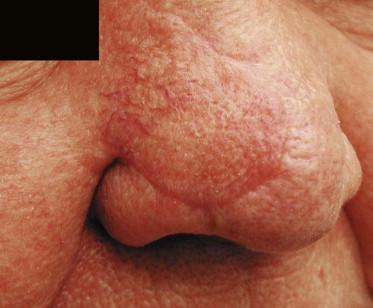Physical Address
304 North Cardinal St.
Dorchester Center, MA 02124
Scar revision methodology includes intralesional steroids, lasers targeting superficial vasculature, non-ablative and ablative lasers – including fractional resurfacing devices, surgical excision, and dermabrasion, and is occasionally as simple as allowing more time for the original scar to mature.
Fusiform elliptical excision is the simplest surgical technique but the resultant scar is always longer than the original scar.
W-plasty, geometric broken-line closure, and Z-plasty each use irregular lines, to give a less visible scar.
Z-plasty, V–Y repair, and Y–V repair are useful to lengthen contracted scars.
Ectropion repair requires special considerations as it has implications beyond cosmetic appearance.
Dermabrasion superficially abrades the scar and can improve uneven scar edges and raised grafts and flaps.
Laser scar revision has evolved to become the treatment of choice for many types of scars, when used appropriately.
Scar formation is an inherent aspect of surgery and natural healing. Frequently, the aesthetic appearance of a scar is the single most important determinant used by patients and physicians to judge the surgical outcome. The ideal scar is a nearly imperceptible fine line that is level with the skin and blends with the natural creases and folds. The scar's final appearance, however, can vary greatly due to surgical technique, including final orientation and shape of the scar as well as the location on the body. Scars with poor cosmetic results include those that are wide, raised, depressed, red, or pigmented, or those that traverse natural relaxed skin tension lines (RSTLs). Depending on the type of abnormality, different techniques are used to improve the overall cosmetic appearance.
When embarking on scar revision, clear expectations should be discussed between the surgeon and the patient, as this is essential to an optimal outcome. The goal of scar revision is to improve the appearance but not completely erase the scar.
At the time of the initial surgery, proper surgical technique such as suturing techniques and planning incisions to lie in relaxed skin tension lines, which were discussed in prior chapters, will obviate the need for scar revision.
A commonly seen flap complication is bulkiness or thickening of the flap above the level of the surrounding skin. This results from a flap that was cut too thick or from trapdooring. Trapdooring or pin-cushioning is a dramatic “quilt-like” deformity, which results from contraction of the flap wound bed during healing, causing the flap to buckle ( Fig. 21.1 ). Flaps should generally lie flat or slightly inset with the surrounding skin at the time of surgery. To inset the flap, its subcutaneous tissue may be thinned with care, guarding against aggressive defatting which may compromise vascularity. Additionally, the defect can be deepened to receive and accommodate an inset flap. Trapdooring is accentuated in rounded or U-shaped flaps. It can be minimized by widely undermining the defect, so that the flap and the surrounding skin contract together during the wound healing process. Lastly, flaps may be designed with squared edges to reduce the trapdoor effect.

Cosmetic units divide the face into distinct regions by landmarks, contours, lines, and skin texture differences. Occasionally defects on the nasal alae and tip are enlarged so that a flap may be designed to encompass an entire cosmetic unit; thus, the natural pin-cushioning of the flap simulates the contours of the area and leads to a less apparent scar.
Scars can take 1 year to mature as collagen continues to remodel. While the vast majority of healing is complete by 1 year, the final appearance of a scar can improve even beyond this period. It is therefore imperative to give adequate time for the natural healing and remodeling process and not to institute invasive revision procedures prematurely. However, occasional situations may arise where early scar revision is necessary to avoid a functional impairment. Patients can actively participate in the healing process of their scars by gently massaging the scar, beginning approximately 1 month postoperatively. This can hasten resolution of the induration associated with newly healing wounds.
Hypertrophic linear scars, as well as bulky grafts and flaps, are ideal for intralesional corticosteroids. Injections can be instituted at approximately 1 month postoperatively, when fatty tissues become fibrofatty. A small amount (as little as 0.1 mL) of low-dose Kenalog (triamcinolone acetonide; Bristol-Myers Squibb, Princeton, NJ) at 5–10 mg/mL is injected into the scar and can be repeated monthly until the scar has flattened. The injection is placed into the bulkiest region of the scar, at the level of the deep dermis or subcutaneous fat. One must be cautious not to be overly aggressive with quantity, frequency, or strength of Kenalog injections, as significant atrophy may occur.
Become a Clinical Tree membership for Full access and enjoy Unlimited articles
If you are a member. Log in here